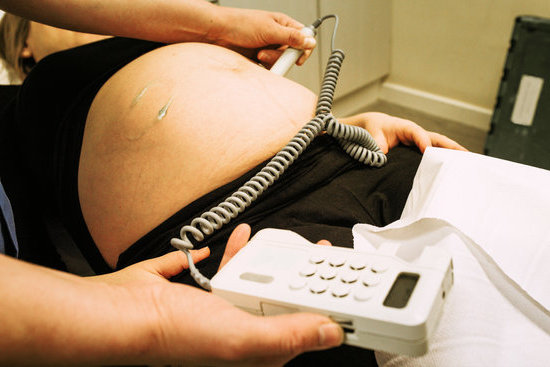Are you trying to conceive and wondering if you might be pregnant? Early detection pregnancy tests are an essential tool for those who are eager to find out if they are expecting.
These tests are important as they allow women to confirm pregnancy at the earliest stages, giving them time to make important decisions and adjustments. In this article, we will explore the significance of early detection pregnancy tests, how they work, their benefits, when to take them, types available in the market, factors to consider when choosing one, tips for accurate use, and understanding the results.
Early detection pregnancy tests are specifically designed to detect pregnancy hormones at low levels which can appear just days after conception. This enables women to determine whether they are pregnant even before their missed period. The ability to confirm pregnancy at an earlier stage allows individuals to make informed choices about their health and lifestyle.
In addition to providing peace of mind and confirming a suspected pregnancy as soon as possible, early detection pregnancy tests also enable women to start prenatal care early. Prenatal care contributes significantly towards ensuring a healthy pregnancy and baby. Additionally, early knowledge of pregnancy can lead to timely adjustments in lifestyle habits which may impact fetal development.
How Do Early Detection Pregnancy Tests Work?
Early Detection Pregnancy Tests work by detecting the presence of human chorionic gonadotropin (hCG) in the urine, which is a hormone produced during pregnancy. There are several types of these tests available in the market, including digital tests, standard tests, and early result tests.
How Do Early Detection Pregnancy Tests Work?
- Digital tests: These tests display the results as “Pregnant” or “Not Pregnant” on a digital screen, making them easy to read and understand.
- Standard tests: These tests use color changing strips or lines to indicate pregnancy, with two lines typically indicating a positive result.
- Early result tests: These tests are designed to detect lower levels of hCG and can provide results even before a missed period, offering early detection of pregnancy.
The way these tests work is by having the user collect a sample of their urine and then either directly applying it to the test or immersing the testing strip into the urine. The hCG in the urine reacts with certain chemicals on the test strip, causing a visible change that indicates whether or not hCG is present at levels indicating pregnancy.
Using an Early Detection Pregnancy Test can provide accurate and reliable results when used correctly according to the instructions provided with each test. It’s important to note that these tests are most effective when used at least one week after a missed period for optimal accuracy.
Whether you prefer digital tests for their clarity or early result tests for their ability to detect pregnancy sooner, there is surely an option that fits your needs when it comes to Early Detection Pregnancy Tests.
The Benefits of Using Early Detection Pregnancy Tests
Early detection pregnancy tests have revolutionized the way women can confirm if they are pregnant or not. These tests are designed to detect pregnancy at a very early stage, allowing women to take necessary steps for prenatal care and family planning sooner rather than later. The benefits of using early detection pregnancy tests are numerous and can greatly impact an individual’s reproductive health.
One of the key benefits of using early detection pregnancy tests is the peace of mind they offer. Waiting for a missed period can be an anxious time for many women who suspect they may be pregnant. However, with these tests, they can receive accurate results as early as 7-10 days after ovulation, providing reassurance and eliminating uncertainty.
Furthermore, early detection pregnancy tests allow individuals to start making important lifestyle changes early in their pregnancy journey. This includes taking prenatal vitamins, avoiding substances that may harm the fetus, and seeking medical guidance. By knowing about the pregnancy sooner, it gives individuals more time to prepare – physically, emotionally and financially – for the arrival of a baby.
Lastly, using an early detection pregnancy test can also lead to earlier prenatal care initiation. This is crucial for ensuring the health and well-being of both the mother and the developing fetus. With confirmation of pregnancy at an early stage, women can schedule their first prenatal appointment with a healthcare provider to begin receiving vital medical guidance and support throughout their pregnancies.
When to Take an Early Detection Pregnancy Test
Why Timing Matters
The timing of when to take an early detection pregnancy test is crucial for obtaining accurate results. Testing too early can result in a false negative, leading to disappointment for those hoping for a positive result. On the other hand, testing too late may lead to missed opportunities for prenatal care and early interventions if the test is positive. Understanding when to take an early detection pregnancy test can help individuals make informed decisions about their reproductive health.
Recommended Timing
Early detection pregnancy tests are designed to detect the presence of the hormone human chorionic gonadotropin (hCG) in urine, which is produced during pregnancy. It is recommended to wait at least seven days after ovulation or the day after a missed period before taking an early detection pregnancy test for accurate results.
Testing too early may not provide enough hCG in the urine for the test to detect, potentially resulting in a false negative. However, waiting until after a missed period can increase the accuracy of the test and reduce the likelihood of receiving a false negative result.
Special Considerations
In some cases, individuals may experience irregular menstrual cycles or have difficulty tracking ovulation, making it challenging to determine when to take an early detection pregnancy test. For those with irregular cycles, it may be beneficial to consult with a healthcare professional to determine the best time for testing or consider using an ovulation predictor kit to track ovulation more accurately.
Additionally, if there are concerns about potential pregnancy complications or if fertility treatments have been used, healthcare guidance regarding testing timing should be sought.
Types of Early Detection Pregnancy Tests Available in the Market
Early Detection Pregnancy Tests are an essential tool for women who want to confirm pregnancy as early as possible. There are several types of Early Detection Pregnancy Tests available in the market, each with its own unique features and advantages. The most common types include traditional urine-based tests, digital tests, and early result tests.
Urine-based Early Detection Pregnancy Tests are the most commonly used type and are typically very affordable. They work by detecting the hormone hCG in a woman’s urine, which is only present when she is pregnant. Digital tests, on the other hand, provide a clear “pregnant” or “not pregnant” result on a digital display, eliminating any confusion that may come with traditional line-based tests.
Another type of Early Detection Pregnancy Test is the early result test. These tests can detect pregnancy hormones even before a woman has missed her period, providing results up to 6 days before her expected period. This can be incredibly beneficial for women who are eager to find out if they are pregnant at the earliest possible moment.
It’s important to note that no matter which type of Early Detection Pregnancy Test a woman chooses, it’s crucial to follow the instructions carefully to ensure accurate results. Additionally, some tests may be more sensitive than others, so it’s important to consider this factor when choosing a test based on how early you want to detect pregnancy.
| Type of Test | Features |
|---|---|
| Urine-based | Affordable and easy to use |
| Digital | Clear “pregnant” or “not pregnant” result |
| Early Result | Detects pregnancy hormones before missed period |
Factors to Consider When Choosing an Early Detection Pregnancy Test
When choosing an early detection pregnancy test, there are several factors to consider to ensure that you select the most accurate and reliable option for your needs. One important factor to consider is the sensitivity of the test.
The sensitivity of a pregnancy test refers to its ability to detect low levels of the hormone hCG (human chorionic gonadotropin) in urine, which is an early indicator of pregnancy. Tests with higher sensitivity levels can detect pregnancy at an earlier stage than those with lower sensitivity levels.
Another important factor to consider is the ease of use and clear instructions provided by the test. Look for a test that is user-friendly and comes with detailed instructions on how to use it correctly. Some tests may also come with additional features such as a digital display or result indicators, which can make the testing process more convenient and easy to interpret.
It’s also essential to consider the cost and reliability of the early detection pregnancy test. While some tests may be more affordable, it’s crucial to ensure that they are still reliable and provide accurate results. Reading reviews and recommendations from healthcare professionals or other users can help in determining the reliability of a particular brand or type of test.
Lastly, consider any additional features or options that may be important to you, such as multiple-pack options for ongoing testing or compatibility with fertility tracking apps. By carefully considering these factors, you can make an informed decision when choosing an early detection pregnancy test that best meets your needs.
| Factor | Description |
|---|---|
| Sensitivity | The ability of the test to detect low levels of hCG in urine |
| Ease of Use | User-friendly design and clear instructions for easy testing process |
| Cost and Reliability | Affordability while ensuring accuracy and reliability of results |
Tips for Using Early Detection Pregnancy Tests Accurately
Using an early detection pregnancy test is a crucial step in confirming pregnancy at the earliest stages. These tests are designed to detect the presence of human chorionic gonadotropin (hCG) in urine, which is a hormone produced during pregnancy. Here are some tips for using early detection pregnancy tests accurately:
- Read the instructions carefully: Before taking the test, it’s important to carefully read and understand the instructions provided with the test kit. Each test may have slightly different procedures for accurate results.
- Use first-morning urine: The concentration of hCG is typically highest in the morning, so using first-morning urine can increase the accuracy of the test.
- Avoid drinking too much liquid before testing: Drinking excessive fluids before taking an early detection pregnancy test can dilute the hCG levels in your urine, making it more challenging for the test to detect pregnancy.
- Check the expiration date: Ensure that the test kit is not expired before using it. Using an expired test can lead to inaccurate results.
- Use a timer: Follow the recommended timing for reading your results after taking the test. Using a timer can help prevent confusion or misinterpretation of results.
By following these tips, individuals can increase their chances of obtaining accurate results when using an early detection pregnancy test.
Understanding the Results of an Early Detection Pregnancy Test
When taking an early detection pregnancy test, it is important to understand how to interpret the results accurately. This section will provide guidance on reading and understanding the results of an early detection pregnancy test.
Interpreting the Results
Once you have taken an early detection pregnancy test, you will need to wait for a specific amount of time as indicated in the instructions. After this waiting period, you can check the results. A positive result typically displays two lines or a plus sign, indicating that you are pregnant.
On the other hand, a negative result shows only one line or a minus sign, indicating that you are not pregnant. It is essential to follow the instructions provided with the test to ensure accurate interpretation.
Understanding Evaporation Lines
Sometimes, after taking an early detection pregnancy test and allowing it to sit for some time, a faint line may appear. This is known as an evaporation line and should not be mistaken for a positive result. It is crucial to read the results within the specified timeframe as outlined in the test’s instructions to avoid misinterpretation.
Seeking Professional Help
If you are unsure about the results of your early detection pregnancy test or if they seem unclear, it is advisable to seek professional medical advice from a healthcare provider. This will help in confirming your pregnancy status and receiving guidance on next steps.
Understanding how to correctly interpret the results of an early detection pregnancy test is vital for making informed decisions about family planning and reproductive health. By following the guidelines provided with the test and seeking professional assistance when needed, individuals can ensure accurate results and proper understanding of their pregnancy status.
Conclusion
In conclusion, early detection pregnancy tests play a crucial role in family planning and reproductive health. These tests are essential for women who are trying to conceive or are concerned about the possibility of being pregnant.
The ability to detect pregnancy in its earliest stages provides individuals with the opportunity to make informed decisions about their reproductive health and future plans. The convenience and accuracy of early detection pregnancy tests make them a valuable tool for women who want to take control of their fertility.
The significance of early detection pregnancy tests cannot be overstated. These tests provide women with the peace of mind that comes from knowing whether they are pregnant or not, allowing them to seek medical care and support as needed. In addition, early knowledge of pregnancy enables individuals to make timely decisions about prenatal care, lifestyle changes, and other important factors that can impact the health of both the mother and the developing baby.
Furthermore, the availability of various types of early detection pregnancy tests in the market ensures that women have options when it comes to choosing a test that best suits their needs. Factors such as sensitivity, ease of use, and cost should be considered when selecting a pregnancy test. Ultimately, early detection pregnancy tests empower individuals by giving them control over their reproductive health and family planning decisions.
Frequently Asked Questions
When Is the Earliest a Pregnancy Test Can Detect?
The earliest a pregnancy test can detect is typically around 7-10 days after ovulation. This is usually before a missed period, as the test can detect the presence of the hormone hCG in urine.
How Good Are Early Detection Pregnancy Tests?
Early detection pregnancy tests are quite reliable, with some claiming to be over 99% accurate when used on the day of your expected period. However, it’s essential to follow the instructions carefully for best results.
How Early Can First Signal Detect Pregnancy?
First Signal claims to be able to detect pregnancy as early as 6 days before your missed period. It uses highly sensitive technology to detect low levels of hCG in urine, but accuracy may vary for each individual.

Welcome to my fertility blog. This is a space where I will be sharing my experiences as I navigate through the world of fertility treatments, as well as provide information and resources about fertility and pregnancy.





